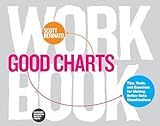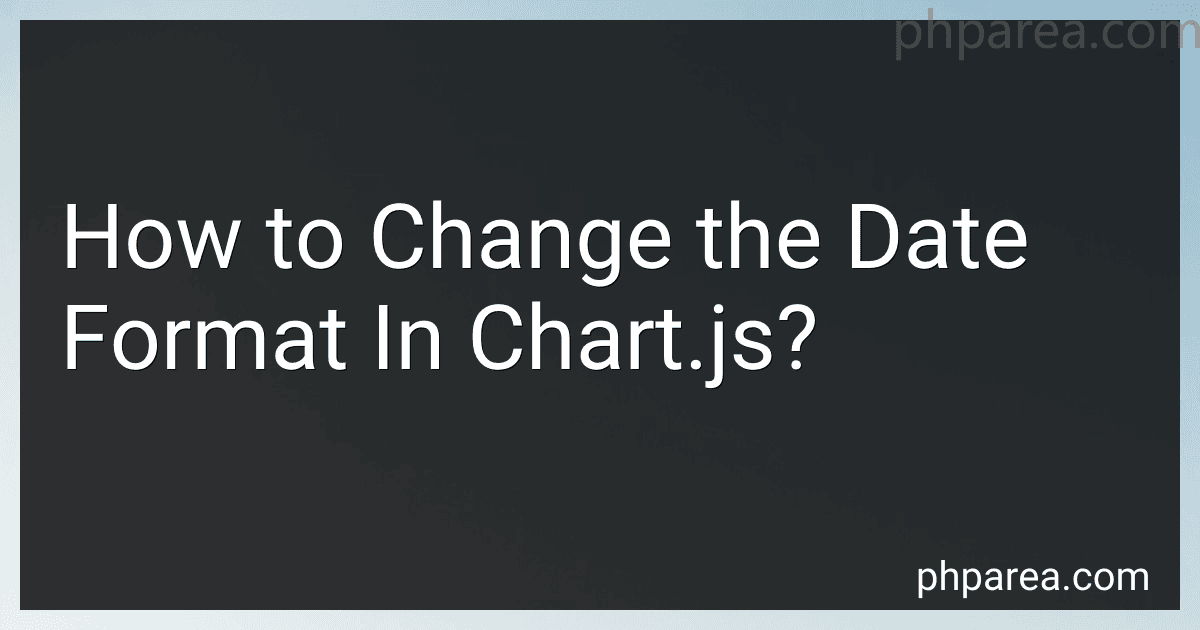Best Tools to Change Date Format in Chart.js to Buy in December 2025

Data Visualization with Microsoft Power BI: How to Design Savvy Dashboards



Good Charts Workbook: Tips, Tools, and Exercises for Making Better Data Visualizations



Fundamentals of Data Visualization: A Primer on Making Informative and Compelling Figures



Data Visualization with Excel Dashboards and Reports



Data Points: Visualization That Means Something



Storytelling with Data: A Data Visualization Guide for Business Professionals, 10th Anniversary Edition



Python Data Science Handbook: Essential Tools for Working with Data


To change the date format in chart.js, you can use the "time" properties in the options object when creating your chart. Within the "scales" object, you can specify the format you want for the x-axis labels by setting the "type" property to "time" and the "time" property to an object with a "displayFormats" property where you can define the format you prefer for the date. This allows you to customize the appearance of the date displayed on your chart according to your needs.
What is the process for changing the date format in chart.js to show AM/PM?
To change the date format in a chart.js chart to show AM/PM, you can use the moment.js library. Here is the process for doing so:
- First, include the moment.js library in your project. You can include it by adding the following script tag in the head section of your HTML file:
- Next, you need to define a custom callback function that formats the date into the desired format (including the AM/PM indicator). You can do this by creating a function like the following:
Chart.defaults.global.tooltips.callbacks.label = function(tooltipItem, data) { var label = data.datasets[tooltipItem.datasetIndex].label || '';
if (label) {
label += ': ';
}
label += moment(tooltipItem.xLabel).format('lll');
return label;
};
- Finally, update your chart configuration options to use this custom callback function for formatting the date. You can do this by adding the following code to your chart options:
options: { tooltips: { mode: 'index', callbacks: { label: function(tooltipItem, data) { return moment(tooltipItem.xLabel).format('lll'); } } } }
By following these steps, you should be able to change the date format in your chart.js chart to show AM/PM.
How to customize the date format in chart.js for dynamic date and time formatting based on user input?
To customize the date format in Chart.js for dynamic date and time formatting based on user input, you can use the "time" scale type and the "time" display format options provided by Chart.js.
Here is a step-by-step guide on how to customize the date format in Chart.js:
Step 1: Include the Chart.js library in your HTML file. You can either download the Chart.js file and include it in your project or link to a CDN version.
Step 2: Create a canvas element in your HTML file to render the chart.
Step 3: Create a JavaScript file and add the following code to dynamically format the date and time based on user input.
var ctx = document.getElementById('myChart').getContext('2d');
var chartData = { labels: ["2022-01-01T00:00:00Z", "2022-01-02T00:00:00Z", "2022-01-03T00:00:00Z", "2022-01-04T00:00:00Z", "2022-01-05T00:00:00Z"], datasets: [{ label: 'Data', data: [12, 19, 3, 5, 2], borderColor: 'blue', fill: false }] };
var myChart = new Chart(ctx, { type: 'line', data: chartData, options: { scales: { x: { type: 'time', time: { unit: 'day', displayFormats: { day: 'DD/MM', month: 'MM/YYYY', year: 'YYYY' } } } } } });
In this code snippet, we are creating a line chart with a time scale for the x-axis. We are specifying the time unit as "day" and providing custom display formats for day, month, and year. You can customize the display formats as needed to format the date and time according to user input.
Step 4: Run your HTML file in a web browser to see the customized date format in your Chart.js chart.
By following these steps, you can easily customize the date format in Chart.js for dynamic date and time formatting based on user input. Feel free to explore more options and configurations provided by the Chart.js library to further customize your charts.
How to change the date format in chart.js to display month and year only?
To change the date format in Chart.js to display only the month and year, you can use the moment.js library to format the dates before passing them to the chart. Here's an example of how you can achieve this:
- First, include the moment.js library in your project:
- Then, when you're creating your chart data, use moment.js to format the dates to display only the month and year. Here's an example using an array of dates:
// Sample array of dates const dates = ["2022-01-01", "2022-02-01", "2022-03-01", "2022-04-01"];
// Format the dates using moment.js const formattedDates = dates.map(date => moment(date).format("MMM YY"));
// Example chart data const chartData = { labels: formattedDates, datasets: [{ label: 'Sales', data: [100, 200, 150, 250], backgroundColor: 'rgba(255, 99, 132, 0.2)', borderColor: 'rgba(255, 99, 132, 1)', borderWidth: 1 }] };
// Create the chart const ctx = document.getElementById('myChart').getContext('2d'); const myChart = new Chart(ctx, { type: 'line', data: chartData });
In this example, the formattedDates array will contain dates in the format "MMM YY" (e.g., "Jan 22", "Feb 22", etc.), which can then be used as labels for the chart. This will display only the month and year on the x-axis.
By using moment.js to format the dates before passing them to Chart.js, you can easily customize the date format to fit your specific requirements.
